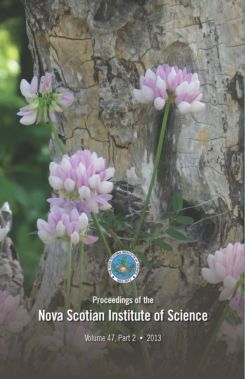EARLY SPRING FLOWERING IN NOVA SCOTIA: AN EXTREME SPRING IS REFLECTED IN ADVANCED FLOWERING
DOI:
https://doi.org/10.15273/pnsis.v47i2.4338Abstract
Twenty species of herbaceous plants and four non-amentiferous shrubs were found in flower in March-April in Nova Scotia during the spring of 2012. Plants were observed primarily in Kings and Antigonish Counties, with several observations from Inverness County. The precocious flowering is attributed to an abnormally warm late winter and spring (February-March) in which climate normals for monthly average temperature were exceeded by a minimum of 1.2°C in February (Tracadie) to a maximum of 8.5°C in March (Kentville). Flowering was an average of 17 days earlier than herbarium records in the largest regional herbaria (ACAD, NSAC). Proportional contribution to the early flowering guild was greater for exotic species which featured weedy families not represented in the native group. These observations of spring climate conditions and flowering phenology are consistent with regional climate change associated with milder and earlier springs.
Key Words: climate change, Nova Scotia, phenology, spring flowering, exotic range expansion.


